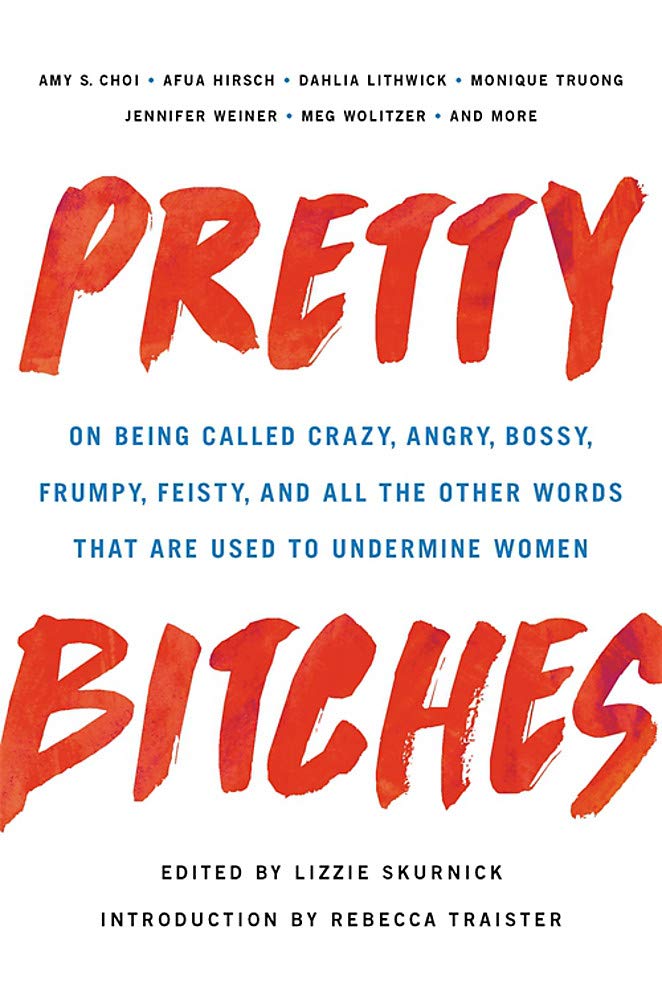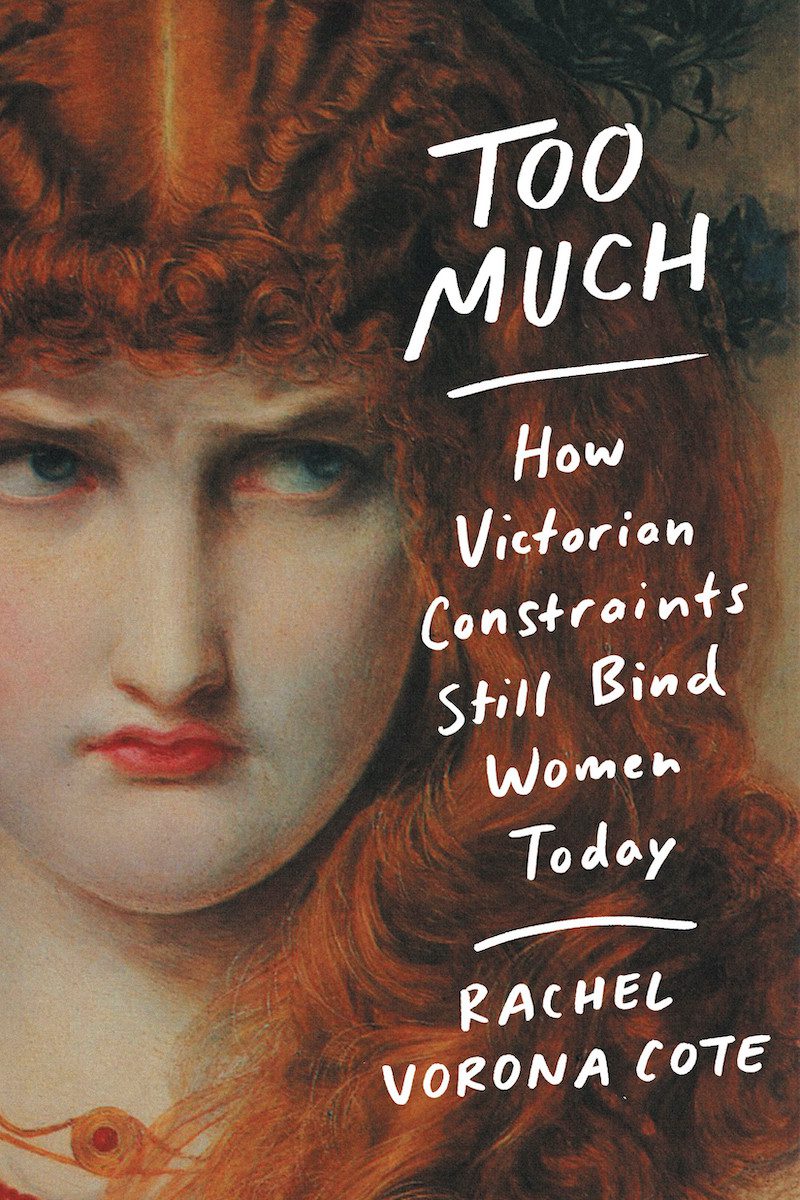I like eating sandwiches alone.
My favorite sandwiches are too big to eat neatly; fat crusts of bread fail to contain slippery avocado, hunks of cheddar cheese, creamy smears of mayonnaise. Crumbs rain onto my lap, pickle juice drips into the divot between my bottom lip and chin, and chip grease stains my fingertips. To enjoy a sandwich the way I want to, in all its gooey excess, I prefer to be alone, so no one will be bothered by what author Rachel Vorona Cote might call my too muchness.
My sandwich-ravishing is representative of the other ways I move through the world: ever-cognizant of how I must tone down this or that. I get “too excited” during arguments, “aggressive” when discussing politics, “intense” when feeling emotion. I’ve known since I was a child that everyone would be more comfortable if I were sweeter, quieter, lesser. For most of my life, I’ve internalized my ugly, messy emotions as proof that I was wrong. So, it’s with utter delight that I consumed two new books: Too Much: How Victorian Constraints Still Bind Women Today, by Rachel Vorona Cote, and Pretty Bitches: On Being Called Crazy, Angry, Bossy, Frumpy, Feisty, and All the Other Words That Are Used to Undermine Women, edited by Lizzie Skurnick, a collection of essays centered around the words used to demean and undermine women. Both join the recent surge in books dedicated to exploring how social power structures impact not only women’s lived experiences but also their emotional lives. These books also validate women like me by shouting from the rooftops that the system is rigged, and that we would, in fact, be crazy to be anything but mad.
My physical appearance is carefully constructed to communicate a sense of ease and cool. I smooth away the tell-tale smears of concealer caught between the crease of my upper eyelids because I want to look like a) I have nothing to conceal, and b) I’m not the type of person who cares about concealing anything. One should look good, but one should be ashamed of trying. If you’ve ever read a celebrity profile, you know the word effortless is practically a prerequisite.
In her essay from Pretty Bitches, “Effortless,” Amy S. Choi eviscerates the bullshit of effortlessness with a simple assessment of her medicine cabinet. It holds, among other things, “seventy-three thousand millionty bazillion NEUTRAL lipsticks and glosses, because the point of slathering chemicals on your face is to look NATURAL. The key is to be only imperfect enough to be charming, so that I can say, ‘Oh, I don’t really wear makeup. I’m pretty low maintenance.’ So I can be the kind of lady that is effortless.”
Effortless is a cousin of pretty and nurturing (words covered in the book by Stephanie Burt and Racquel D’Apice, respectively)—it is something women are expected to simply be. A woman who wants to adhere to patriarchal beauty standards and spends time and money to do so? Vain and vapid. A woman who doesn’t? Any number of words also highlighted in Pretty Bitches: ugly, fat, crazy. As the writers in this collection consistently demonstrate, most words used to diminish and restrain women capture within a few letters the crazy-making work of trying to be just enough but never too much.
While beauty standards are a tool of oppression for all women, Lihle Z. Mtshali shows in “Yellow-Bone” how racism makes beauty that much more of a trap for black women. She writes about growing up during apartheid in South Africa, where black women struggled to gain incremental privilege in a racist hierarchy by way of skin bleaching creams. Colorism, Mtshali says, prevents us all from “seeing people beyond their shades.” Beauty is particularly fraught for trans women, too. While recognizing that pretty can feel dismissive and belittling to some, Stephanie Burt complicates our understanding of the word by reclaiming it on her own terms. She argues that the enemy is instead the “toxic nonsense the cultural critic Julia Serano has labeled anti-feminine sentiment or femmephobia, a prejudice not against kinds of bodies so much as against their free and vivid expression.” Burt wrests power away from the male gaze by imbuing the descriptor with her own sense of pretty’s potential as a tool for self-expression.
Many essays in Pretty Bitches provide catharsis by simply giving voice to the ways in which a particular word might bind women. To be a woman is to internalize so much gaslighting on a daily basis that it’s a relief to read essays that proclaim over and over that you’re not alone. Yes, one’s voice becomes shrill in anger—how could it not? Yes, professional is simply upholding white supremacy in the workplace, as Afua Hirsch shows, and yes, as Elizabeth Spiers points out, an aloof woman is at fault not for being “cool or distant,” but for failing to act as a “potential reflecting pool” for a man.
Glynnis MacNicol writes with weariness about being viewed as lucky for being unmarried and childfree, as though her life were a carefree frolic without stress or responsibility. The problem with lucky, she writes, is that it’s located in cultural expectations for women to serve as appendages to something else, something tacitly understood to be greater than themselves:
What do we reward women for? Staying put… For tying themselves to others. For not having time for themselves. For not doing as they choose. I’m not suggesting, obviously, that women who are married and have children have not made their own choices—simply that the aspects of those roles they are most rewarded for often involve them depriving themselves. Anything else is decadent. Like a massage.
Reading this, I realized how often I use my socially sanctioned role as a mother to avoid censure for being any particular shade of selfish. If I get a massage, I’m eager to tell my masseuse that I have three kids (“One of them is a baby!”) as if having children warrants me this “treat.” And when the masseuse chuckles knowingly and says, “They keep you busy!” I rest easy in my knowledge that my self-indulgence is perceived as justified. That I deserve it. Justified. Selfish. Busy. Treat. Deserve. When I finished Pretty Bitches, I found myself adrift and awash in an unending sea of words. But I also found myself using them—and receiving them—more critically.
My copy of Rachel Vorona Cote’s Too Much is so dog-eared it takes up twice as much room on my bookshelf as it did prior to being read. In chapters that combine rigorous research with illuminating renderings of Cote’s personal struggles with too muchness—a term Cote first stumbled across in Lewis Carroll’s Alice’s Adventures in Wonderland—this book is like a best friend who inspires you to read more if only to keep pace with her intellect. By drawing on her experience as a Victorian scholar, Cote shows how sexist notions of feminine “hysteria” live on in the ways our culture gaslights, discredits, and belittles women. She writes about the stubborn persistence of tabooed female sexuality, the problem of unruly female bodies, and about how self-harm intersects with the female experience. But Cote’s chapters about female closeness and craziness in particular startled me with their honesty and probing insight.
For any woman who has felt more romance and passion in certain female friendships than unions we’re taught to prioritize (e.g. marriage), read “Close” and bask in the sunshine of feeling seen. Cote reads her own history of being “too close” to women friends against Victorian standards of homosociality. There’s great joy in seeing oneself in another woman, she argues, a joy altogether separate from the rom-com variety of “completing” a man. “To assert that two are one is to defy tenets of logic on the hallowed principle of woman’s intimacy,” she writes, “to desire spectacular manifestations of one’s closeness because platonic romance is as vast as boundless as anything sexual.”
As a little girl, I wrote fevered love letters to best friends promising them eternal devotion, only to reread them and deem the letters too effusive. I watched with dismay as peers began to pursue boyfriends when I felt more crushed by a best friend’s choice to sit with Kristen at lunch than by anything a mere boy could do to me. Now, as a thirty-eight-year-old heterosexual married woman, my heart still constricts when I feel a new friendship spark into love. I have outgrown much of my internalized shame at loving my women friends deeply, but part of me is still little-girl insecure that my longing for platonic closeness will be seen as strange or desperate or out of proportion.
Cote squarely locates the source of my insecurity in heteronormative boundaries that serve only to prop up “a civilization rigidly arranged around straight white men.” She prompts us to imagine a world in which “our salvation is located in the love of women, rather than in the grand erect institutions of men.” And although Charlotte didn’t express herself quite as eloquently as Cote, I couldn’t help but think of Sex and the City: “Maybe we can be each other’s soulmates.” Maybe we can expand our notions of whom we should love and why, and acknowledge that just as sexuality is a continuum so too is platonic intimacy.
Women and their pain are frequently belittled and maligned by the medical establishment, and in “Crazy,” Cote shows how mental illness in particular is haunted by Victorian definitions of “hysteria.” Hysteria, she points out, is rooted in the Greek word for uterus, and white male Victorians were simply following in the footsteps of every patriarchal society before them by labeling any trait or behavior they found inconvenient a symptom of the handy catch-all “hysteria.” “Crazy” combines a radically empathetic reconsideration of Britney Spears’s notorious head shaving incident with analyses of Anna Karenina, Mary Barton, The Yellow Wallpaper, and other examples from Victorian literature to shine light on how too muchness and mental illness are “interlaced and staunchly tethered to the way one lives in the world.” When we express too muchness, we are treated like unruly children. When we demand treatment for illness, we are told far too often our pain is imagined or psychosomatic.
When I read Charlotte Perkins Gilman’s The Yellow Wallpaper in high school, the story of a woman “taking a rest cure” as prescribed by her physician husband registered as creepy in the same sort of way The Sixth Sense did. Only instead of “seeing dead people,” the protagonist sees people ambling in the “numerous paths and arbors” on her yellow floral wallpaper. As a sixteen-year-old, I was sympathetic to the unnamed narrator’s sense of claustrophobia and frustrated energy—until she rips the wallpaper down so as to freely “creep” about the room. Her husband John faints at the sight of her. Surely, I thought, she must be mad. He must’ve been right to lock her up. The sense of kinship I had felt with her fell apart once I considered her plight no longer legitimate. I didn’t think of the story again until I had my first child.
As a days-old mother, perched painfully atop a pillow (my tailbone had cracked during childbirth), I nursed my son and took stock of my new world, enclosed by four walls. The fawn leather of the couch and the indigos striping the linen throw pillows melted into the pleasant serenity of Benjamin Moore Shaker Beige, but I saw things. Stuff. Covered up plaster, a clump of dusty insect carcass caught under the leg of the couch, a feather shaken loose from one of the pillows. I wondered when the feather first started growing from the flesh of whichever bird it was plucked from. I wondered how it hurt. For me, postpartum depression felt like being softly, gently consumed by a new reality in which I struggled, then failed, to locate myself. And my domestic surroundings provided a tidy metaphor for that frightening sense of self-alienation unique to new motherhood.
I didn’t realize The Yellow Wallpaper is widely considered to reflect the experience of postpartum depression until my son was a few years old. But Gilman’s illustration of a woman gaslighted for feeling symptoms of a completely real phenomenon so accurately represented my sense of dislocation following the birth of my first child that it was impossible not to remember the narrator’s sense of desperation and bewilderment. “Toss her into prison, and when she protests, assure her that it’s her sanctuary,” Cote writes, of the many ways our society tells women to shush away our concerns as fanciful or unworthy of serious attention. My prison was the early days of motherhood, which Instagram assured me were beautiful, precious, and above all picturesque. Well-meaning strangers told me to enjoy every moment. “Crazy” evocatively renders this feeling of being trapped in something the rest of the world tells you should make you not only deliriously happy, but fulfilled.
Both Pretty Bitches and Too Much underline an insidious truth about patriarchy: that as women, our demands to be seen, our demands to merely exist, are often deemed too much. Our troublesome bodies, which can offend simply by their size, their color, their shape. Our hysteria-causing internal organs, which make humanity possible but mark us as cursed. Our desires: for food, for sex, for love, for validation, for justice. The singular success of using words to stifle women is that there will always be a fresh way to deem our existence dangerous, unworthy, or unwanted. There will always be another word used against us. And given the laughable impossibility of the task of existing authentically and freely, why should we try? Why not drop the burden? Cote offers this battle cry:
I no longer want to pant after comely corsets, with all their trappings of performed equanimity and decorum—those cages that will only break my bones and stifle what is mine to declare. And all of it is mine to declare, every last tear and smile and shriek. And what is yours, that of course is your dominion, and your treasure, to brandish or to keep close as you will. Too muchness heaves with potential as a positive feminine force, but it is the choice to wield it that matters most of all.
My third child was born ten months ago, and when he rushed into the world, I felt in full ownership of a “positive feminine force.” Blood and amniotic fluid and sweat proclaimed my corporeal reality; my legs splayed high and wide, revealing all of me; my guttural screams were unshackled. I had no choice, of course. The raw urgency of birth stripped away all my internalized fears of being too loud, too bloody, too big, too much. But I cling to this memory, when, for a brief time, my too muchness was magnificent, when my existence was undeniable.






